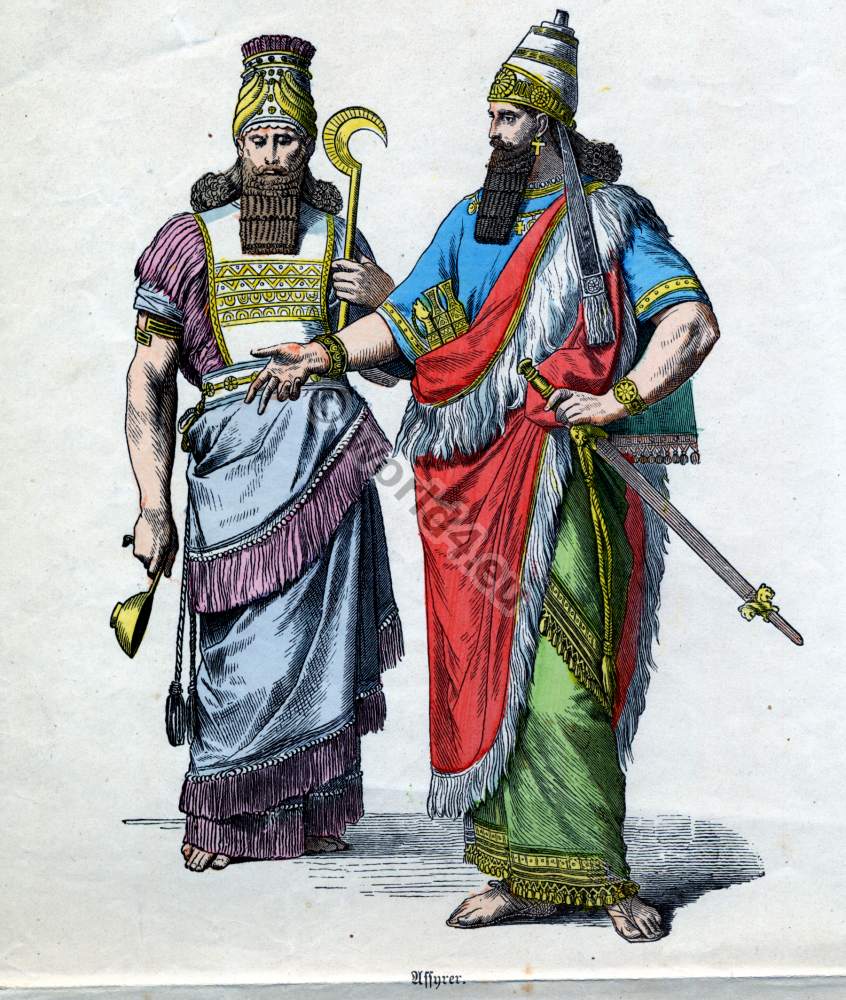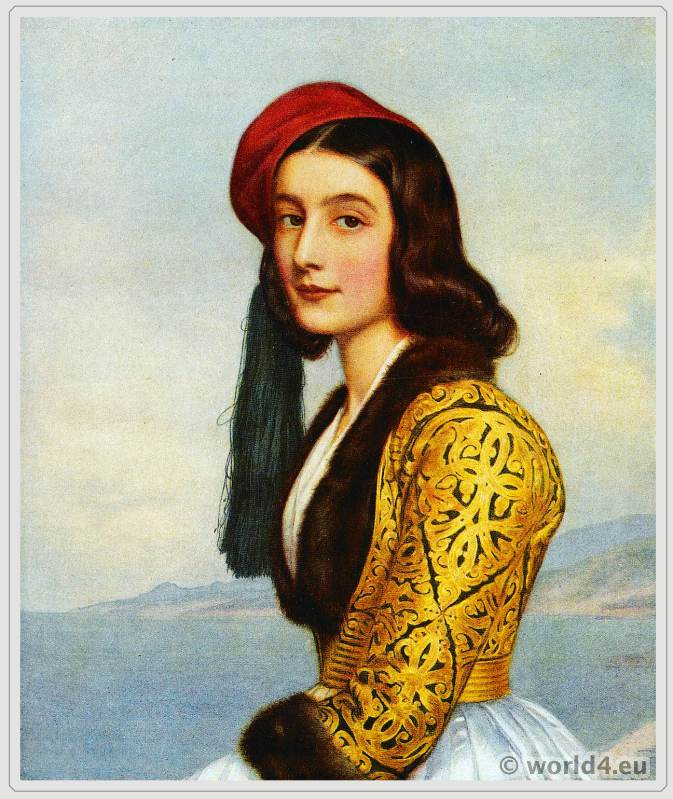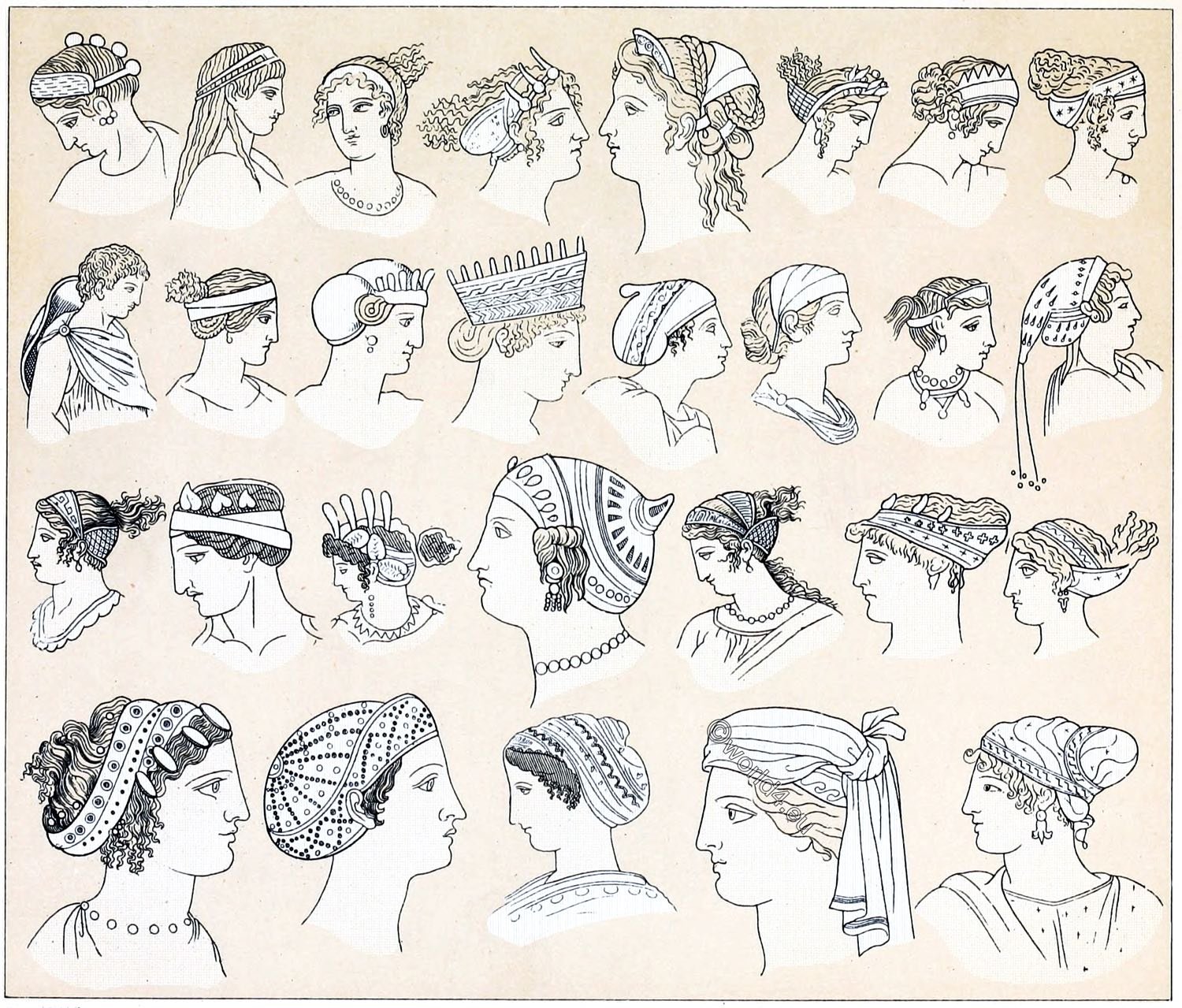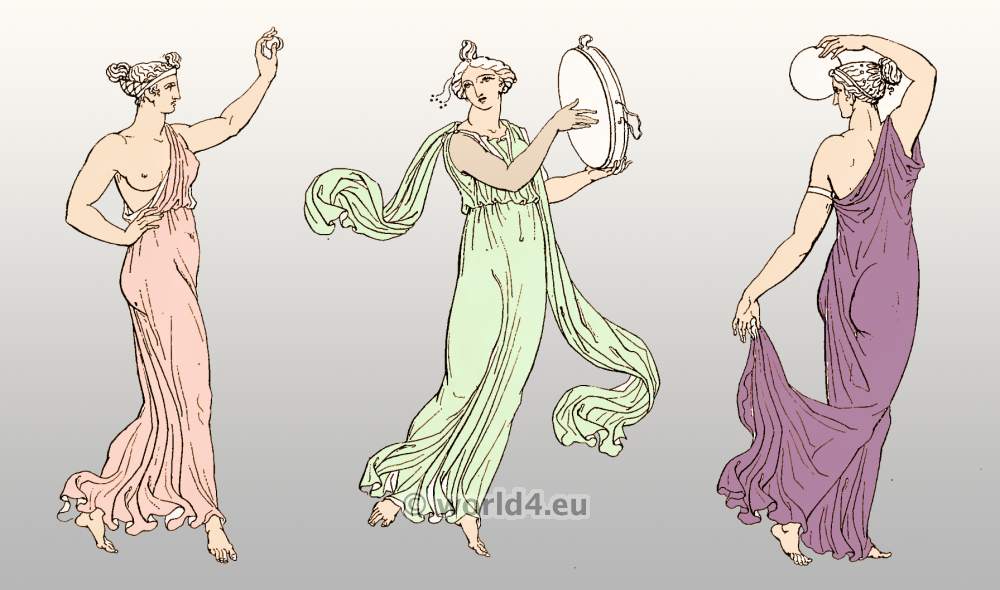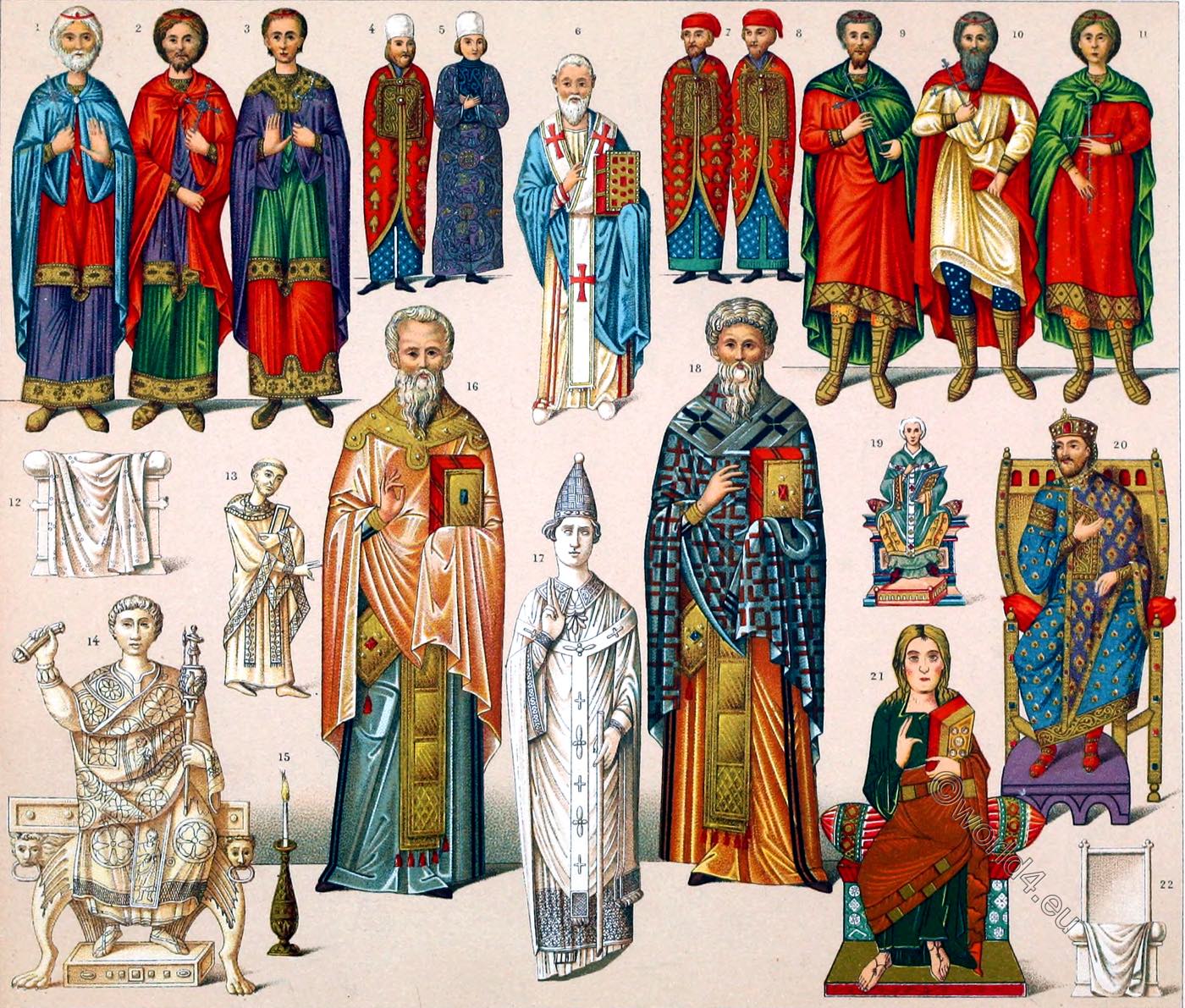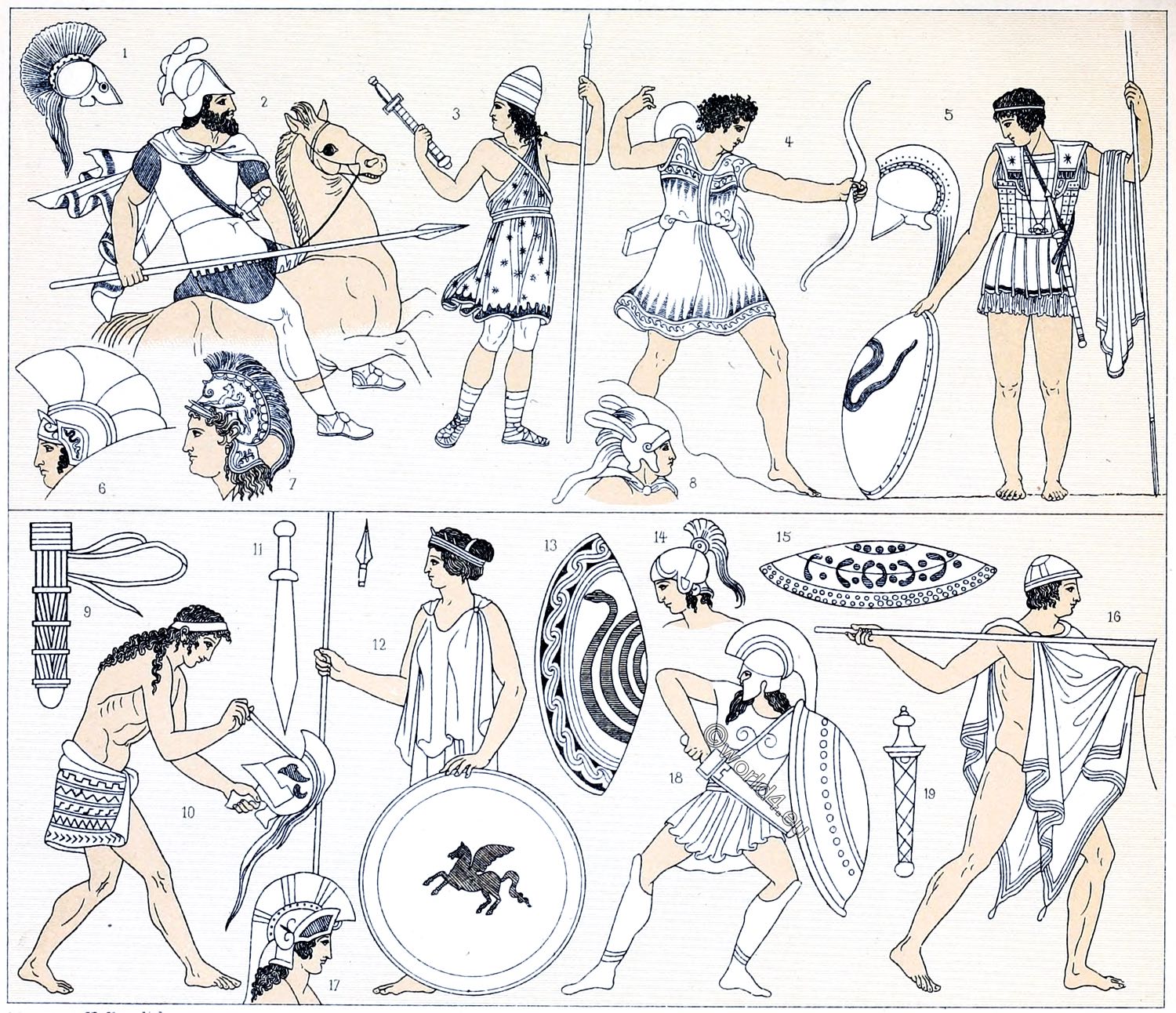On the history of costumes. Twenty-fourth arc. Greeks. Pre-Christian period. Münchener Bilderbogen No. 531. Illustration by Andreas Müller.

Winner at the Olympic Games, Greek Bacchus priest and Greek King.
Source: Münchener Bilderbogen 1848 to 1898. On the history of costumes. Published by Braun & Schneider. Royal court and university printing office of Dr. C. Wolf & Sohn in Munich.
The Olympic Games of antiquity were a major sporting event of the ancient world and part of the Panhellenic Games. They took place every four years after the end of an Olympiad, always in summer. The venue was the Sacred Grove of Olympia in the landscape of Elis on the Peloponnese peninsula.
According to official chronology, the Olympic Games (also called the Elian Olympics) were held from 776 BC to 393 AD. However, archaeological evidence of competitions in Olympia dates back only to about 700 BC. They were apparently still held after the official closure of the sanctuary in 393 AD until the 6th century, even if only on a modest scale.
The games in Olympia were the oldest of the sports festivals in ancient Greece. They attained the greatest importance and also survived the longest. The Panhellenic Games also included the Pythian Games held every four years in Delphi in honour of Apollo, the Nemean Games held every two years in honour of Zeus at Nemea and Argos and, in the same rotation, the Isthmian Games in honour of Poseidon of Corinth. The Athenians, on the other hand, never succeeded in including the Panathenaic Games at Athens among the “sacred games”.
Dionysus (ancient Greek Διόνυσος Diónysos, Latinised Dionysus) is the god of wine, joy, grapes, fertility, madness and ecstasy in the Greek world of the gods. He was additionally called Bromios (“noisemaker”), Bacchus (“caller”) or Bakchos by the Greeks and Romans because of the noise his entourage made. Dionysus was often equated with Iakchos and is the youngest of the great Greek gods. In literature and poetry he is often referred to as Lysios and as Lyaeus (“the Worry Breaker”), but also as Anthroporrhaistes (“Man Shatterer”).
Dionysia (ancient Greek Διονύσια Dionysia) were festivals in ancient Greece in honour of the god Dionysus, the god of ecstasy, intoxication, transformation and wine. What began as a religious cult of Thracian origin with processions developed in Athens into a festival, the so-called urban Dionysia. Greek tragedy and comedy in a religious context developed from the cultic singing, dancing and sacrificial rites.
Continuing
- Greek doric. Costumes during the so-called Golden Age of Greece.
- The Greek Costume & Fashion History of Antiquity.
- The Homeric costume of early Greeks. Dress of ancient Greece.
- Greek Military. Two warriors in armor of iron, bronze, and leather.
- Greek-Roman furniture. Throne chair, Bisellium, Sella castrensis.
- How Greek women dressed. The female dress of the classical period.
- A quadriga. Greek-Roman Gods. The ancient greek-roman culture.
- The Greek military of antiquity. Spartans, Hoplites, Peltasts.
- Greek women’s costumes. Endymata and epiblemata.
- Hairstyles and headgear in ancient Greece. Historical Greek fashion.
- Greek Military of Antiquity. Different types of Chariots and Armor.
- Ancient Greece Coiffures. Hairstyles & Hair Fashions of Greek antiquity.
- The Ancient Greek fashion history. Clothing in Ancient Greece.
Discover more from World4 Costume Culture History
Subscribe to get the latest posts sent to your email.

